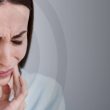Introduction to Seasonal Affective Disorder
Seasonal Affective Disorder, also known as SAD, is a type of depression that occurs during the fall and winter months. It is believed to be caused by the change in daylight hours and the decrease in sunlight exposure. Symptoms of SAD include fatigue, low energy, difficulty concentrating, changes in appetite and weight, and feelings of hopelessness.
While SAD can be a debilitating condition, there are treatments available that can help. Light therapy is one of the most effective treatments for SAD. It involves sitting in front of a special light box that emits bright light. This helps to mimic the sunlight and can improve mood and energy levels. Other treatments for SAD include antidepressant medication, cognitive-behavioral therapy, and vitamin D supplements.
If you think you may be suffering from SAD, it’s important to talk to your doctor. With proper treatment, you can get through the winter months without feeling down in the dumps.
Symptoms of Seasonal Affective Disorder
Seasonal Affective Disorder, or SAD, is a type of depression that occurs during the winter months when there is less natural sunlight. People who suffer from SAD may feel sluggish, depressed, irritable, and anxious. They may have difficulty concentrating and may sleep more than usual. Appetite may increase, leading to weight gain.
There are several theories as to why people develop SAD, but it is believed that the change in seasons can disrupt the body’s natural circadian rhythms and produce changes in brain chemistry. People who are at risk for SAD include those who live in northern climates where there is less sunlight during winter, women (especially young women), and people with a family history of depression.
If you think you might be suffering from SAD, talk to your doctor. He or she can help you determine if your symptoms are due to a medical condition or something else entirely. There are also many effective treatments for SAD, so don’t hesitate to seek help if you think you need it.
Causes of Seasonal Affective Disorder
There are a number of possible causes of seasonal affective disorder, and it is likely that a combination of these factors contributes to the development of the condition. One theory suggests that the reduced level of sunlight during winter months affects the body’s production of serotonin, a neurotransmitter that plays a role in regulating mood. A drop in serotonin levels may lead to feelings of depression.
Other possible causes of seasonal affective disorder include changes in the levels of melatonin (a hormone that helps regulate sleep) and vitamin D (a vitamin that is essential for good health). It is also thought that people with certain genetic traits may be more susceptible to developing seasonal affective disorder.
Treatment for Seasonal Affective Disorder
Seasonal affective disorder, or SAD, is a type of depression that occurs during the fall and winter months when there is less natural sunlight. Symptoms of SAD include feeling depressed, hopeless, irritable, and tired; having trouble sleeping; and craving carbohydrates. While there is no one-size-fits-all treatment for SAD, there are several things you can do to help yourself feel better.
Light therapy is one of the most common treatments for SAD. This involves sitting in front of a special light box for 30 minutes each day. The light from the box mimics natural sunlight and can help to improve your mood.
Antidepressants are another option for treating SAD. These medications can take several weeks to start working, so it’s important to be patient. If you don’t want to take medication, talk to your doctor about other options such as therapy or vitamin D supplements.
Getting outside in the daylight is also helpful for people with SAD. Even on cloudy days, the natural light can help to improve your mood. Exercise is another great way to boost your mood and energy levels. And finally, make sure to eat a healthy diet and get enough sleep – both are important for managing any type of depression.
Prevention of Seasonal Affective Disorder
Seasonal Affective Disorder, or SAD, is a type of depression that occurs during the winter months when there is less sunlight. SAD can make you feel tired, depressed, and irritable. It can also make it difficult to concentrate and make decisions.
There are several things you can do to prevent SAD. Getting regular exercise, spending time outdoors, and using a light therapy box are all effective ways to prevent SAD. If you start to feel the symptoms of SAD, these preventive measures can help reduce the severity of your symptoms.
Conclusion
Seasonal Affective Disorder can be a difficult condition to live with, but we hope that this article has given you some helpful tips on how to cope. From making sure you get enough sunlight during the day and taking advantage of natural supplements like Vitamin D and Omega-3 fatty acids, to engaging in activities that spark creativity or relaxation such as yoga and meditation, there are many tools available for those suffering from SAD. Don’t forget that it’s important to reach out for help if your symptoms persist or worsen – talking about your feelings with a professional is key if you want to manage your SAD successfully.








